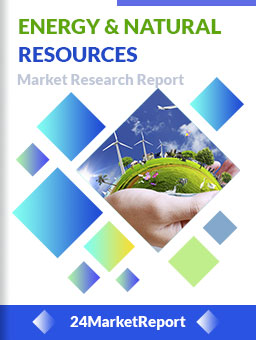
Download FREE Report Sample
Download Free sampleMARKET INSIGHTS
Global Wafer Recycling and Foundry Service market size was valued at USD 92.1 billion in 2024. The market is projected to grow from USD 100.3 billion in 2025 to USD 162.53 billion by 2032, exhibiting a CAGR of 8.7% during the forecast period.
Wafer recycling and foundry services are critical components of semiconductor manufacturing. Foundries provide access to advanced fabrication equipment essential for producing chips, while wafer recycling involves recovering used silicon substrates to minimize waste. This sustainable approach reuses materials rather than discarding them, reducing environmental impact. Foundry services, whether on-site or remote, support yield optimization through real-time process engineering, ensuring high-quality semiconductor production. Together, these services enhance efficiency and cost-effectiveness in chip manufacturing.
The market is driven by rising semiconductor demand, particularly in AI, IoT, and automotive applications, alongside increasing focus on sustainable manufacturing. While the semiconductor industry faced slower growth in 2022 (4.4% YoY to USD 580 billion, per WSTS), wafer recycling and foundry services remain resilient due to their cost-saving benefits. Key players like TSMC, Samsung, and GlobalFoundries are expanding capabilities to meet evolving industry needs, ensuring long-term market expansion.
Semiconductor Industry Expansion to Accelerate Wafer Recycling and Foundry Services Demand
The semiconductor industry's continuous expansion is driving significant growth in wafer recycling and foundry services. With the global semiconductor market reaching $580 billion in 2022, despite economic headwinds, the demand for efficient wafer processing solutions remains strong. Foundries are expanding production capacities to meet the escalating need for chips across automotive, AI, IoT, and 5G applications. Leading foundries like TSMC and Samsung have announced multi-billion dollar investments in new fabrication facilities, particularly in Asia and North America, which will require extensive wafer recycling infrastructure to maintain cost efficiency and sustainability.
Sustainability Initiatives to Boost Wafer Recycling Adoption
To know more about market statistics, Download a FREE Sample copy
Increasing environmental regulations and corporate sustainability goals are compelling semiconductor manufacturers to prioritize wafer recycling. The industry generates thousands of silicon wafers as byproducts during chip production, with recycling offering both economic and ecological benefits. Recycling processes can recover up to 90% of silicon material from used wafers, significantly reducing manufacturing waste. Major semiconductor hubs including the EU, US, and China have implemented strict e-waste management policies that encourage wafer recycling as part of circular economy initiatives in electronics manufacturing.
Furthermore, the economic advantages of wafer recycling are becoming more apparent:
➤ Recycled wafers can reduce material costs by 30-40% compared to virgin silicon wafers, offering foundries substantial savings in high-volume production environments.
This combination of regulatory pressure and cost efficiency is accelerating market adoption across both established foundries and emerging semiconductor manufacturers.
Technical Limitations in Wafer Recycling Quality to Constrain Market Growth
While wafer recycling offers significant benefits, technical challenges in maintaining material quality present substantial barriers to widespread adoption. Recycled wafers often exhibit higher defect densities and surface imperfections compared to prime-grade wafers, limiting their use in advanced node semiconductor manufacturing. The most stringent applications, such as sub-7nm process technologies, still require virgin silicon wafers to meet yield requirements, creating a performance ceiling for recycled materials. Advanced node chips account for nearly 45% of foundry revenue, representing a significant portion of the market where recycled wafers face adoption challenges.
Other Constraints
Process Standardization
The lack of universal standards for wafer recycling creates variability in output quality across different service providers. Inconsistent processing methods can lead to unpredictable performance in downstream manufacturing, making some foundries hesitant to integrate recycled materials into their production flows.
Cost-Benefit Tradeoffs
While recycling offers material cost savings, the additional sorting, testing, and requalification processes required for recycled wafers can offset these advantages. Foundries must carefully evaluate total cost of ownership, particularly for mixed-grade wafer inventories.
Emerging Applications in Power Electronics and MEMS to Create New Revenue Streams
The growing power electronics and MEMS markets present substantial opportunities for wafer recycling services. Unlike advanced logic chips, these applications typically have less stringent wafer quality requirements, making them ideal candidates for recycled substrates. The power electronics market is projected to grow at over 8% annually through 2030, driven by electric vehicle adoption and renewable energy infrastructure expansion. Similarly, MEMS devices for sensors and actuators continue to proliferate across automotive and consumer electronics applications. These segments collectively represent a $12 billion opportunity for wafer recycling providers developing specialized services tailored to their specific material requirements.
Additionally, the solar industry offers promising expansion potential:
➤ Photovoltaic manufacturers are increasingly adopting recycled semiconductor-grade silicon wafers, which offer superior performance compared to traditional solar-grade silicon at competitive pricing.
Innovations in wafer reclamation techniques are further enabling the use of recycled materials in these less demanding but high-volume applications, creating alternative revenue channels for service providers.
Geopolitical Factors and Supply Chain Uncertainty to Impact Market Development
The wafer recycling and foundry service market faces significant challenges from ongoing geopolitical tensions and supply chain volatility. Export controls and trade restrictions on semiconductor technologies between major producing regions are creating fragmentation in the global supply chain. Foundries are increasingly localizing operations, which complicates the economics of wafer recycling networks that previously benefited from centralized processing facilities. The US CHIPS Act and similar initiatives in other regions are reshaping manufacturing geography, requiring recycling providers to establish localized capabilities near new foundry clusters to remain competitive.
Additional Challenges
Technology Transition Risks
The semiconductor industry's transition to new materials like silicon carbide and gallium nitride introduces uncertainty for traditional silicon wafer recycling businesses. While these wide-bandgap semiconductors represent a growing portion of the market, they require different recycling approaches that may not leverage existing silicon processing infrastructure.
Capital Intensity
Establishing comprehensive wafer recycling operations demands substantial upfront investment in specialized equipment and cleanroom facilities. This high barrier to entry limits market participation and innovation, potentially slowing the development of more efficient recycling technologies that could address current quality limitations.
Wafer Foundry Service Segment Dominates the Market Due to Rising Semiconductor Manufacturing Demand
The market is segmented based on type into:
Wafer Foundry Service
Subtypes: Pure-play foundry services and IDM foundry services
Wafer Recycling Service
Subtypes: Test wafer recycling and production wafer recycling
IC Processing Segment Leads Due to Expanding Semiconductor Industry
The market is segmented based on application into:
Solar Cells
IC Processing
Others (including MEMS and optoelectronics)
Advanced Nodes Segment Gains Traction with Growing Demand for High-Performance Chips
The market is segmented based on technology node into:
Above 28nm
28nm-10nm
Below 10nm
Established Foundries and Emerging Recyclers Compete for Semiconductor Market Share
The wafer recycling and foundry service market features a dynamic mix of global semiconductor giants and specialized recycling firms competing across the manufacturing value chain. Taiwan Semiconductor Manufacturing Company (TSMC) dominates the foundry segment with nearly 60% market share in advanced node production, leveraging its technological leadership in 3nm and 5nm processes. The company reported $69.3 billion in revenue for 2022, demonstrating steady growth despite global semiconductor market fluctuations.
Samsung Foundry and GlobalFoundries follow as key competitors, collectively accounting for over 25% of global foundry capacity. These companies compete aggressively in the mature nodes market (28nm-180nm) while investing heavily in next-generation packaging technologies. Recent expansions like Samsung's $17 billion Arizona fab and GlobalFoundries' Singapore facility upgrade highlight the sector's growth trajectory.
The wafer recycling segment shows more fragmentation, with NOVA Electronic Materials and Ferrotec Global emerging as leaders in silicon reclamation services. These firms have developed proprietary chemical-mechanical polishing (CMP) and cleaning techniques that allow up to 85% material recovery from used wafers, creating significant cost savings for fab operators.
Strategic collaborations are reshaping the competitive environment, with notable partnerships like TSMC's alliance with Vanguard International Semiconductor for specialty process development and Samsung's joint venture with Magnachip Semiconductor for display driver ICs. Such alliances enable companies to combine technical expertise while expanding service offerings.
Samsung Foundry (South Korea)
GlobalFoundries (U.S.)
United Microelectronics Corporation (UMC) (Taiwan)
Semiconductor Manufacturing International Corporation (SMIC) (China)
NOVA Electronic Materials (U.S.)
Ferrotec Global (Japan)
ROHM Semiconductor (Japan)
STMicroelectronics (Switzerland)
TowerJazz (Israel)
Dongbu HiTek (South Korea)
Fine Silicon Manufacturing (Taiwan)
Seiren KST (Japan)
Powerchip Technology (Taiwan)
Vanguard International Semiconductor (Taiwan)
The semiconductor industry is witnessing accelerated adoption of wafer recycling solutions as environmental sustainability becomes a key priority across global manufacturing sectors. With semiconductor fabs generating approximately 100,000 tons of silicon waste annually, wafer recycling presents a $3.2 billion cost-saving opportunity while reducing environmental impact. Major foundries have implemented closed-loop recycling systems where up to 85% of process scrap can be reclaimed and reintroduced into production cycles. This trend aligns with the broader industry shift toward circular economy models, particularly in regions with stringent environmental regulations like the European Union and California.
Advanced Node Manufacturing Demands
The transition to 7nm and below process nodes is creating new challenges in wafer handling and defect management. Foundry services are responding with specialized wafer reprocessing techniques that enable recovery of high-value substrates. While new 300mm wafers cost $200-$500 each, recycled wafers for R&D purposes can reduce material costs by 60-70%. The market for wafer reclaim services in advanced nodes is growing at 11.2% annually, outpacing the overall industry growth as chipmakers seek to optimize their material utilization in expensive cutting-edge processes.
Recent trade policies and supply chain security concerns have significantly impacted foundry service dynamics. The CHIPS Act in the United States has committed $52 billion to domestic semiconductor manufacturing, spurring new investments in American wafer recycling infrastructure. Meanwhile, export controls on advanced semiconductor equipment have created secondary effects in the recycling market, with certain wafer reclamation technologies facing restrictions. These developments are accelerating regional self-sufficiency strategies, with Asia-Pacific still dominating 72% of foundry capacity but North America showing the fastest growth in supporting services at 15.3% CAGR.
The convergence of environmental priorities and manufacturing economics continues to transform wafer management strategies across the semiconductor ecosystem. While the traditional model focused on single-use wafers, modern approaches now emphasize comprehensive lifecycle management through specialized foundry services capable of handling increasingly complex material streams with precise technical requirements.
North America
The North American market for wafer recycling and foundry services is driven by robust semiconductor demand, particularly from the U.S., where tech giants like Intel and NVIDIA invest heavily in domestic chip production. Government initiatives, including the CHIPS and Science Act, allocated $52 billion to boost semiconductor manufacturing, indirectly promoting wafer recycling as part of sustainability efforts. Regulatory pressures, such as California’s Electronic Waste Recycling Act, further encourage closed-loop material reuse. Foundry services are dominated by established players like GlobalFoundries and Intel Foundry Services, with specialty wafer recycling firms like NOVA Electronic Materials gaining traction. However, high operational costs and stringent compliance requirements remain challenges.
Europe
Europe’s wafer recycling market is shaped by the EU’s Circular Economy Action Plan and stringent e-waste laws under the WEEE Directive, mandating up to 85% recycling rates for electronic components. Foundry services, led by STMicroelectronics and Infineon, focus on automotive and industrial applications, leveraging Europe’s strong R&D ecosystem. Germany and France are key hubs, with wafer recycling gaining importance to reduce reliance on imported silicon. Despite this, limited scale in local foundry capacity compared to Asia-Pacific restricts growth. The region’s emphasis on green semiconductor manufacturing, however, positions it as an innovation leader in sustainable wafer reuse.
Asia-Pacific
As the epicenter of semiconductor production, Asia-Pacific dominates the global wafer recycling and foundry market, accounting for over 60% of capacity. Taiwan’s TSMC and South Korea’s Samsung drive foundry demand, while China’s SMIC accelerates expansion amid geopolitical tensions. Wafer recycling is critical in regions like Japan and Taiwan due to material scarcity and cost pressures, with firms like Ferrotec Global specializing in reclaiming high-purity silicon. India’s nascent semiconductor push, including a $10 billion incentive scheme, opens new opportunities. However, fragmented recycling standards and intellectual property concerns in certain countries pose hurdles.
South America
South America’s market remains underdeveloped but shows potential due to Brazil’s and Argentina’s growing electronics manufacturing sectors. Foundry services are limited, with most wafers imported from Asia or North America. Local recycling initiatives, such as Brazil’s reverse logistics programs for e-waste, are emerging, though infrastructure gaps and economic instability slow adoption. Foreign investments in renewable energy projects, particularly solar (which uses recycled silicon), could spur demand. The region’s reliance on outdated technology and low regulatory enforcement, however, limits near-term expansion.
Middle East & Africa
The MEA market is in early stages, with Israel and the UAE leading through partnerships with global foundries like TowerJazz (now Tower Semiconductor). Saudi Arabia’s Vision 2030 plan includes semiconductor industry development, but wafer recycling remains negligible due to limited local production. Africa’s solar energy boom creates ancillary demand for recycled silicon wafers, though lack of processing facilities forces reliance on imports. While long-term prospects exist with urban digitization, current growth is hampered by political volatility and underinvestment in advanced manufacturing.
This market research report offers a holistic overview of global and regional markets for the forecast period 2025–2032. It presents accurate and actionable insights based on a blend of primary and secondary research.
✅ Market Overview
Global and regional market size (historical & forecast)
Growth trends and value/volume projections
✅ Segmentation Analysis
By product type or category
By application or usage area
By end-user industry
By distribution channel (if applicable)
✅ Regional Insights
North America, Europe, Asia-Pacific, Latin America, Middle East & Africa
Country-level data for key markets
✅ Competitive Landscape
Company profiles and market share analysis
Key strategies: M&A, partnerships, expansions
Product portfolio and pricing strategies
✅ Technology & Innovation
Emerging technologies and R&D trends
Automation, digitalization, sustainability initiatives
Impact of AI, IoT, or other disruptors (where applicable)
✅ Market Dynamics
Key drivers supporting market growth
Restraints and potential risk factors
Supply chain trends and challenges
✅ Opportunities & Recommendations
High-growth segments
Investment hotspots
Strategic suggestions for stakeholders
✅ Stakeholder Insights
Target audience includes manufacturers, suppliers, distributors, investors, regulators, and policymakers
-> Key players include TSMC, Globalfoundries, UMC, SMIC, Samsung, Advantec, ROHM Semiconductor, NOVA Electronic Materials, and STMicroelectronics, among others.
-> Key growth drivers include increasing semiconductor demand, sustainability initiatives, cost optimization in chip manufacturing, and government regulations promoting circular economy practices.
-> Asia-Pacific dominates the market with over 60% share, led by semiconductor manufacturing hubs in Taiwan, South Korea, and China.
-> Emerging trends include AI-driven wafer defect detection, advanced recycling techniques for 300mm wafers, and collaborative foundry ecosystems.

Speak to our Custom Research Team and get the Custom Research in a budget
Custom ResearchFrequently Asked Questions ?
A license granted to one user. Rules or conditions might be applied for e.g. the use of electric files (PDFs) or printings, depending on product.
A license granted to multiple users.
A license granted to a single business site/establishment.
A license granted to all employees within organisation access to the product.
Upto Working 24 to 48 hrs
Upto 72 hrs max - Weekends and Public Holidays
Online Payments with PayPal and CCavenue
Wire Transfer/Bank Transfer
Hard Copy




 Industry Market Size
Industry Market Size SWOT Analysis
SWOT Analysis Industry Major Players
Industry Major Players Revenue Forecasts
Revenue Forecasts Historical and Forecast Growth
Historical and Forecast Growth Profitability Analysis
Profitability Analysis
























